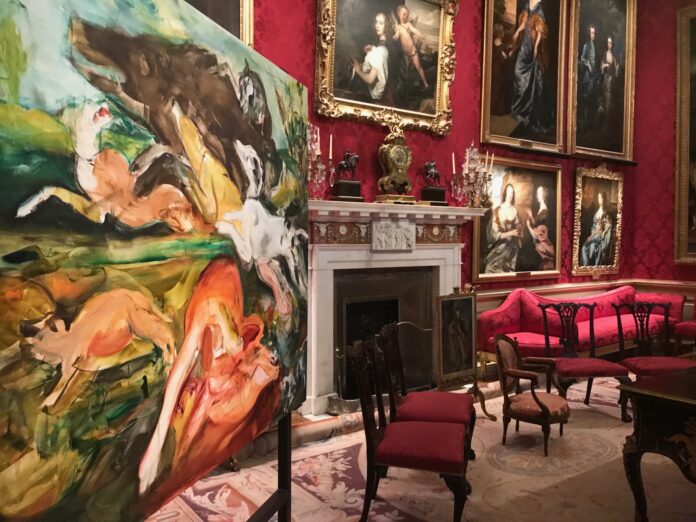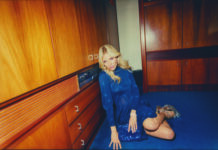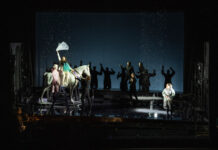Famous painter Cecily Brown was at home in New York as her ground-breaking exhibition at Blenheim Palace opened this week, unable to attend the opening party thanks to the pandemic.
Luckily, her initial research was conducted in time and the astonishing 24-strong portfolio of entirely new work adorning the walls of Blenheim Palace couldn’t be more striking or spectacular.
That Brown has conducted all these works in her American studio is an inspiring feat, considering some pieces are so large they had to be painted as quadriptychs before being fitted together at Blenheim.
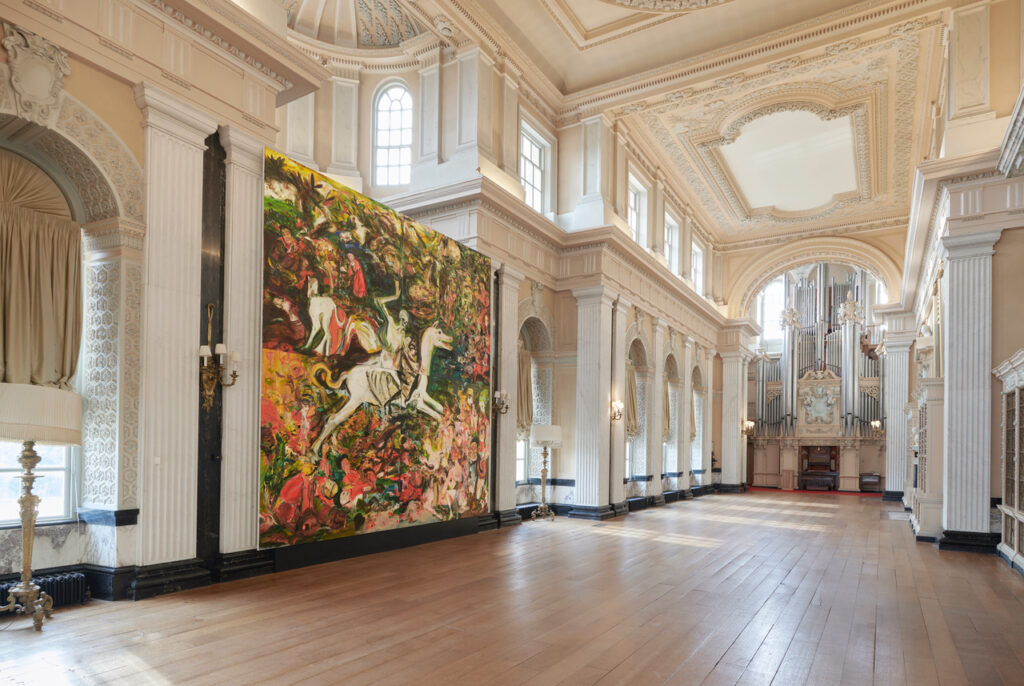
But what is even more miraculous is their colours and symmetry, how their style both blends and contrasts with the famous stately home’s interiors in such an intimate manner.
That it’s taken this long to dedicate the Blenheim Art Foundation’s annual showcase solely to painting, or a British artist, is interesting in itself, but Brown has taken on the Herculean task with relish.

To set the scene, the British painter’s auction record was set at a Sotheby’s in May 2018, when Suddenly Last Summer (1999) sold for $6.7 million. Cecily Brown paintings are now in the permanent collections of pivotal museums and institutions all over the world from the Guggenheim, to the Whitney Museum of American Art, and Tate Modern.
READ ABOUT CECILY HERE: http://551.326.mywebsitetransfer.com/major-new-solo-exhibition-by-renowned-british-contemporary-painter-cecily-brown-announced-at-blenheim-palace/
But surely the Blenheim exhibition sets a precedent, because not only has Brown designed the entire collection of new work around Blenheim, but it boasts her largest painting ever and sees her branching into a new artistic genre altogether – textiles – by making a carpet for the exhibition, which is as exquisite as the paintings surrounding it.

Our tour stretches from the entrance through the palace, its staterooms, dining rooms and corridors revealing room after room of Cecily’s exquisite works, embracing the family history and the period nuances of hunting, war, battles and country pursuits so relevant to Blenheim.
I fell in love with Cecily Brown at Blenheim. Her work is unmissable, her contribution to modern and contemporary art irrefutable, her character shining through in these new ground-breaking pieces
We begin in the grand hall where Brown has interpreted the first Duke Of Marlborough’s banner and replicated it with her own twist, the colours, shapes and conscious blending into the surrounding environment setting the scene for what is to come, complete with an arresting majesty and power all of its own.
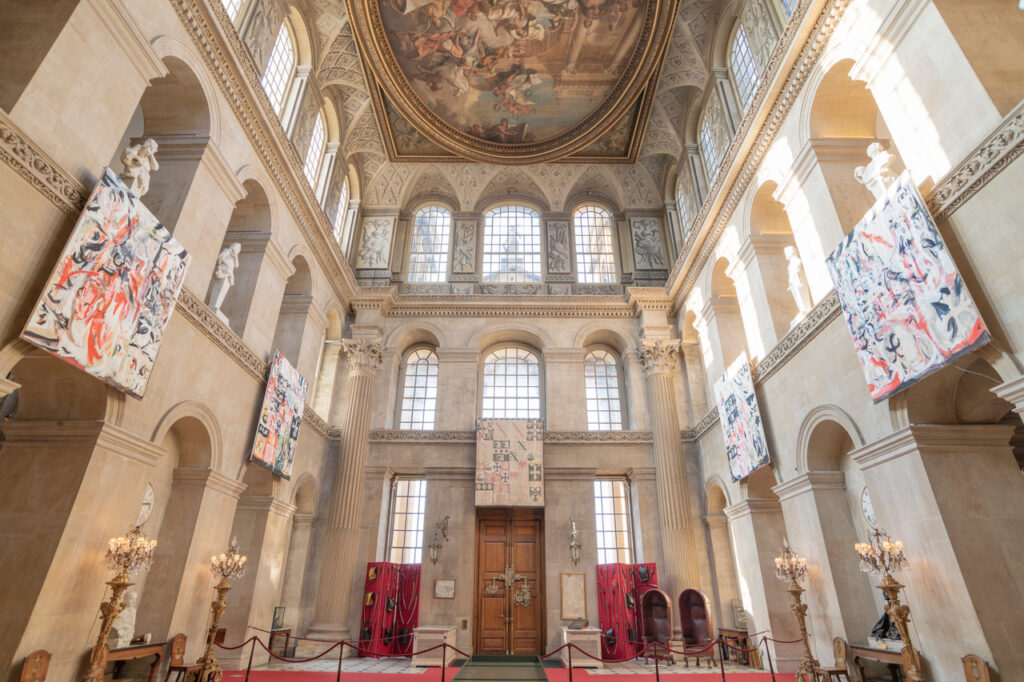
And what becomes evident, with each new work, is how extensive Brown’s research has been, immersing herself in nostalgia and childhood memories (think titles such as There’ll Always Be An England), which are then projected onto Blenheim’s extensive history, art collections and anecdotes. The results are impressive and simpatico.

There are also hints of humour scattered throughout. A little brown spaniel that Cecily has obviously taken a liking to, appears in each painting, sometimes almost impossible to detect, like a Where’s Wally puzzle.
And in the aforementioned The Triumph of Death, Cecily has apparently included the famous 18-karat gold toilet, made so infamous after its theft from Blenheim during the exhibition there by Italian artist Maurizio Cattelan, which made global news.
while Brown never takes herself too seriously, the questions she asks continue to plague you long after you leave blenheim, much like the works themselves
Could we find it? No? But just knowing it was there entitles one to a tongue-in-cheek wink at the lavish displays of unapologetic imperialism and peerage surrounding you.
I wonder then how Brown’s anti-hunting, vegetarian stance was compromised during this current outpouring of work? Perhaps the answer lies within because her paintings are mainly devoid of people – the protagonists in the hunting pictures are animals.

But perhaps the starkest message appears in The Triumph of Death itself, a bacchanalian riot of colour and writhing forms, huntsmen and bewigged aristos alike drowning in their own excess, death suffocated by their own revelry, while death rides through triumphantly.
A morality tale indeed and a particularly prescient choice in these perilous pandemic times.
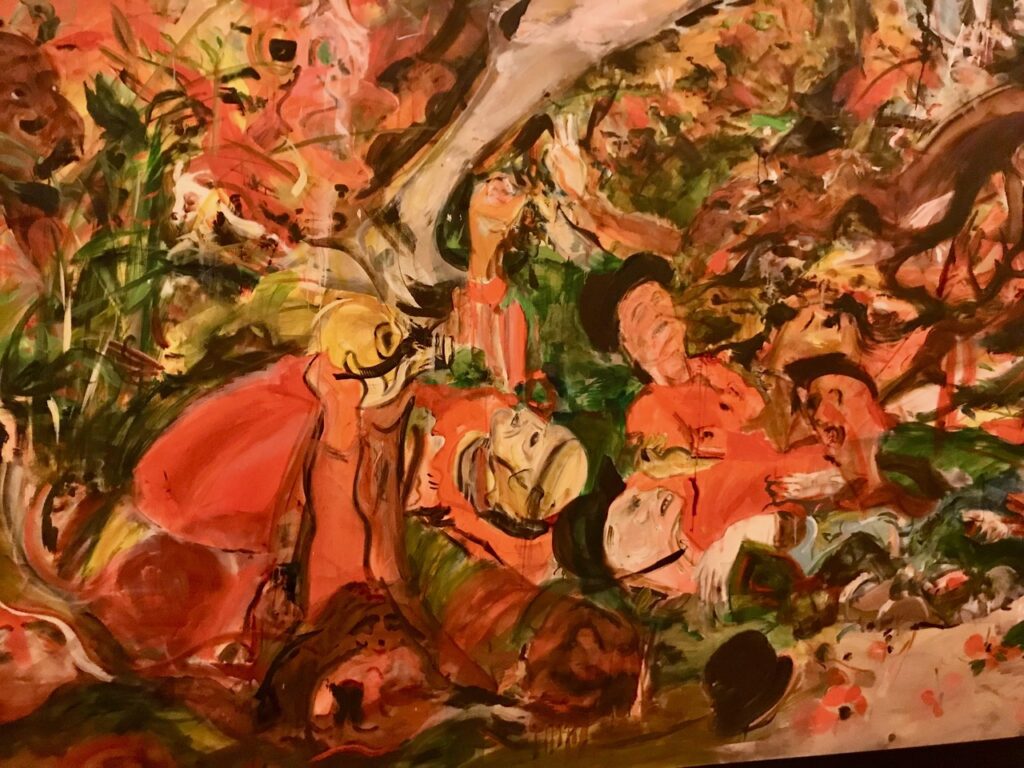
Brown’s message may be subtle, but it’s powerful nonetheless. Take her painting The Children Of The Fourth Duke which sits in front of Joshua Reynolds original.
Brown’s painting replaces a reinterpretation by Lady Caroline, (married to the 4th Duke Of Marlborough and a contemporary of Reynolds).
In so doing Brown is not only joining the sisterhood by adding another layer to a precedent set centuries before, but the lack of men in her portrayal give it a timely feminist twist, perhaps highlighting the archaic hereditary peerage system still in play.
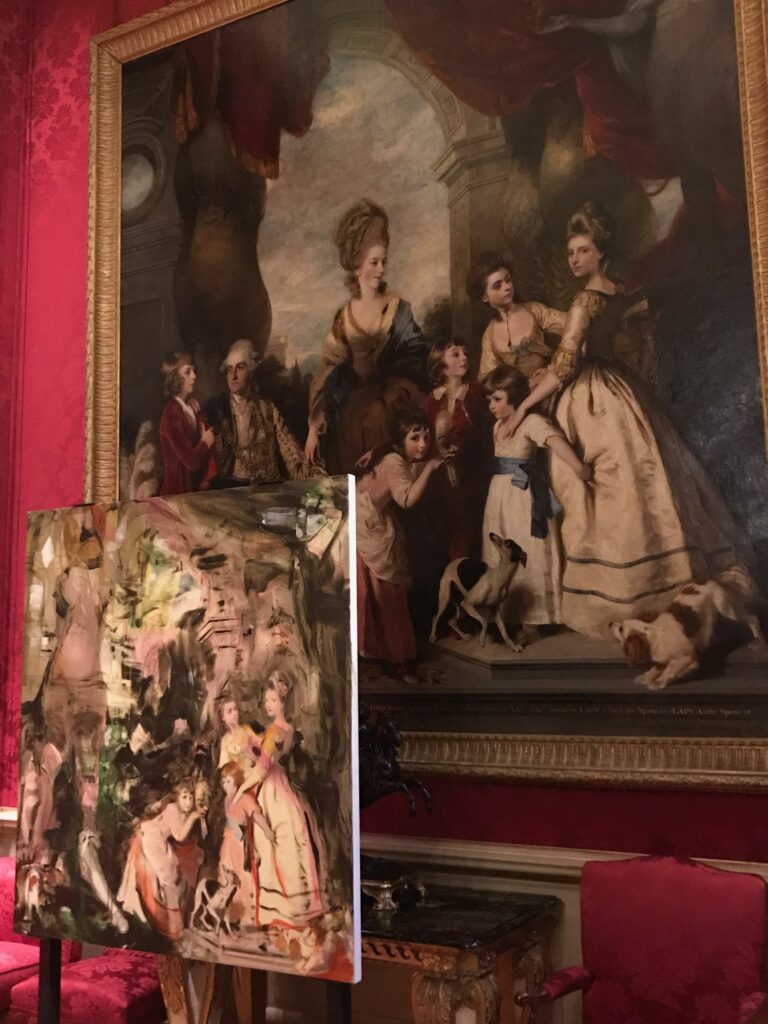
I fell in love with Cecily Brown at Blenheim. Her work is unmissable, her contribution to modern and contemporary art irrefutable, her character shining through in these new ground-breaking pieces.
And while Brown never takes herself too seriously, the questions she forces you to ask about society, the past, equality, feminism and our priorities today continue to plague you long after you leave the stately home, much like the works themselves.
I applaud Blenheim Art Foundation for bringing Brown back home, albeit temporarily, and for championing such a life-affirming exhibition.

The Cecily Brown exhibition runs at Blenheim until January 3 2021. Book tickets at https://www.blenheimpalace.com/tickets-booking/tickets/











